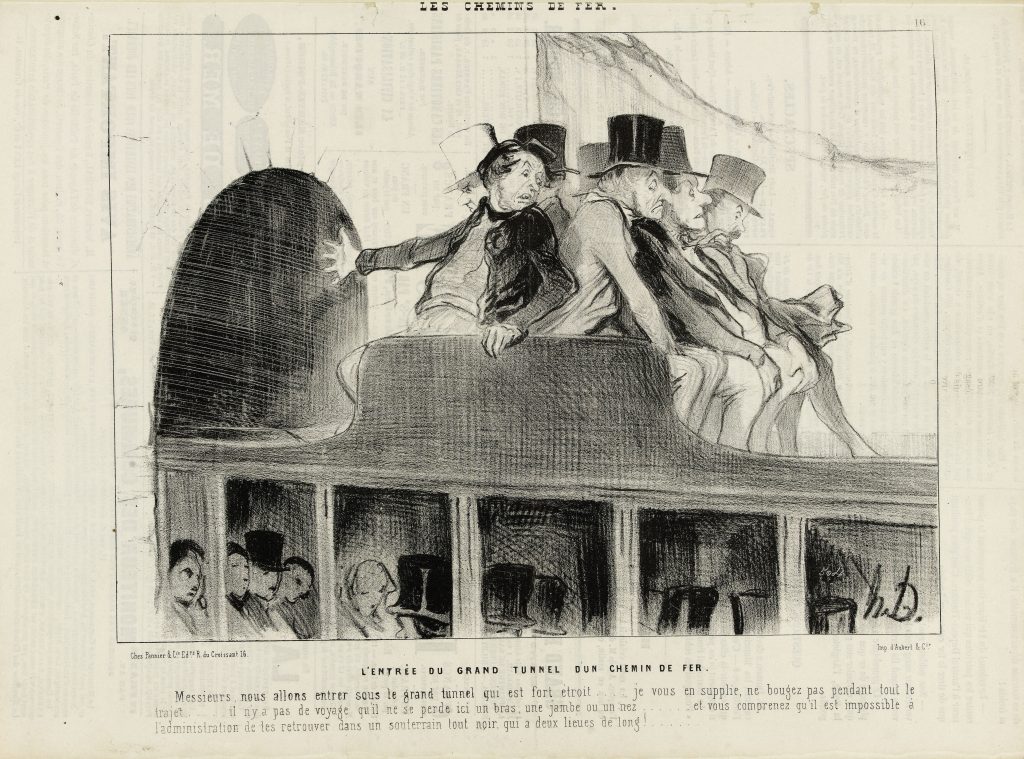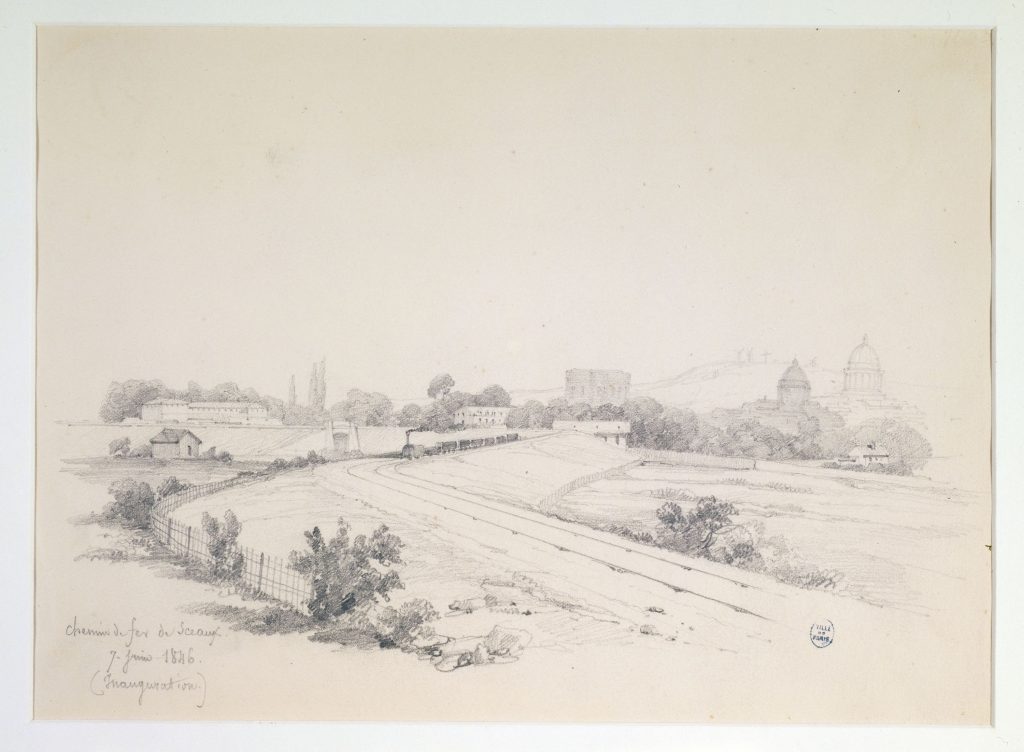
The first railroads to be built in France transported freight: merchandise and coal. The Paris to Saint-Germain line, which opened in 1837, was the first to be designed exclusively for passengers. The new mode of transport proved profitable and additional lines quickly appeared, many of them radiating from Paris. By 1839 it was possible to go to Versailles, in 1840 Juvisy, a line extended as far as Orléans in 1843; Tours could be reached in 1846 and Nantes in 1851…
Might not the speed be fatal to passengers, who could die asphyxiated, unable to breathe? Would not the violent changes in temperature experienced when passing through tunnels lead to serious pulmonary illness? Despite these fears, and despite a spectacular catastrophe in Meudon—the first rail accident in France—the new means of transportation was a runaway success.
Caricaturists, of course, lost no time in seizing on this revolution in social practice. Like the stagecoach, the earliest railway cars had an open upper deck where passengers were exposed to the wind, cold, rain and coal dust. Daumier highlights the discomforts of rail travel, real and imagined, as the French were just discovering them.


Heinrich Heine, the great German poet whose political commitments led to exile in Paris for the greater part of his life, spent time with all the city’s great figures of art and philosophy: Hector Berlioz, Frédéric Chopin, Alexandre Dumas, Théophile Gautier, George Sand… In 1840, Balzac dedicated to Heine his novel Un Prince de la bohème. Heine became a correspondent for several German newspapers whom he regularly sent articles regarding life in Paris. One of these reviewed the new railway system.
“The railways are in turn such a providential event as gives mankind a new start, which changes the form and
Heinrich Heine, ‘Letter of 5 May 1843’, Lutetia. Letters on the Political, Artistic and Social Life of France(Translation Charles Godfrey Leland)
